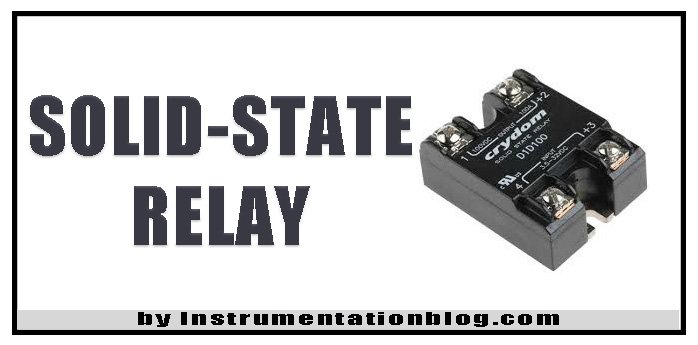I hope you have read my article about What is Relay? It’s important in the electrical field. Now in this article, we are going to see about the other types of relay that is the Solid-State Relay. Unlike an electromechanical relay, which uses a magnetic coil, spring, electrical contacts to operate and switch a supply.

The SSR (Solid-State Relay) has no moving parts, instead of this, it uses electrical and optical properties of semiconductors to perform its switching functions. Just like EMR and SSR also provides complete electrical isolation between input and output electrical contacts.
Solid State Relay and Electromechanical Relay are fundamentally similar in their operation that it isolates the low voltage input circuit from the output and its switching contacts. Electromechanical relay has some limitation over solid-state relay that it has lower switching speed and less life span due to moving contacts.
Table of Contents
Solid State Relay Basics and Working Principle
What is Solid State Relay?
A Solid-State Realy is a switch made of solid-state electrical elements that are capable of driving high-current load with a small current signal.

Solid-State Relay can switch the circuit ON and OFF with no physical contact and no spark due to the switching characteristics of electrical elements like SCR, TRIAC, and transistor.
Solid-State Relay has the following advantages over electromechanical or electromagnetic relays like high-reliability, no contact, no spark, long life, fast switching speed, and small in size.
Solid-State Relay Working Principle
Solid-State Relay is capable of switching AC or DC load, even some of them are capable of switching both AC and DC load.

Let’s take an example of an AC SSR working principle using the above diagram. SSR has two input terminals and two output terminals. It is a four-terminal active device.
Only a certain signal to A&B can control the ON/OFF state at the output terminal C&D and achieve the switching function. The coupling circuit plays an important role to provide a connection between input and output terminals.
Opto Coupler is used as a component in the coupling circuit because of its good sensitivity, high action speed, and high level of input to output isolation.
The trigger circuit provides the desired trigger signal to drive the switching circuit. With the use of special control circuits like zero-crossing control, circuit eliminates the radio frequency interference.
Solid-State Relay Features
⇒ SSRs have no moving parts, therefore no wear and tear, and have advantages of vibration resistance, corrosion resistance, long life, and high reliability.
⇒ AC SSRs use a zero-crossing control circuit which certainly reduces the noise and making the SSR minimal interference to the power supply in the long-term working.
⇒ Short switching time, SSRs can be used in high-frequency applications.
⇒ High insulation due to optical isolation properties.
⇒ Low input power consumption.
⇒ High load capacity
I hope you like this article about Solid-State Relay. If you like this article and please give us feedback in the comment section below.
I am suggesting you more articles about the programmable logic controller.
⇒ What is PLC? How does it work?
⇒ PLC Timer and PLC Counter
You can read more articles about Instrumentations and find the books that boost your knowledge in the field of instrumentation ⇒
